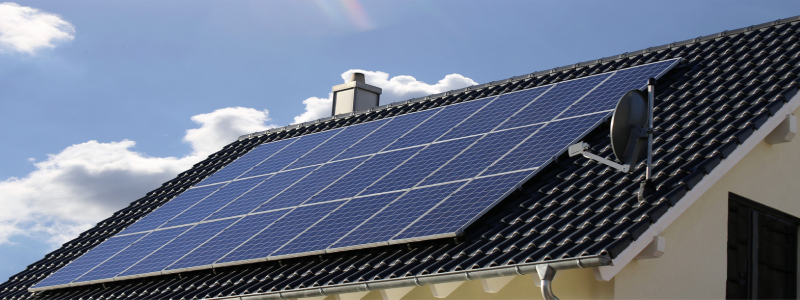
Extreme weather and shifting climate patterns are becoming the new normal. We’re now seeing rising sea levels, intense heat waves and extreme storms more regularly. These climate change impacts pose serious risks to businesses in every sector. No enterprise is immune from the threats of property damage, supply chain disruptions, health hazards, regulatory changes and shifting customer behaviours driven by a changing climate.
Fortunately, businesses have options to protect their bottom lines and physical assets from climate change risks. With smart preparation and planning today, companies can reduce their exposure to climate threats, adapt their operations to be more resilient, and ensure proper insurance coverage is in place. Businesses need to be proactive about climate risk mitigation. This will ensure they’re in a better position to avoid the worst impacts and keep their doors open when major climate disruptions occur.
Here, we’ll provide an overview of key strategies businesses should consider to safeguard both their premises and profits from climate change. With a multi-layered approach focused on mitigation, adaptation and insurance, enterprises can shield themselves from climate impacts and maintain business continuity even as the world around them transforms.
Assess the risks
Before developing climate resilience plans for your property and assets, you first need to thoroughly assess the specific risks climate change poses. Identify the most significant threats your location is likely to face, whether that’s heat waves, drought, flooding, storms, wildfires or other expected changes.
With input from climate experts and engineers, systematically evaluate your property's vulnerabilities to these projected impacts. Carefully assess factors like the elevation, drainage, roof strength, exterior materials, landscaping, utility infrastructure and other physical characteristics on site. Business owners can also use climate models to estimate potential financial losses your property could incur under different climate change scenarios. For example, map projected flooding levels onto your property and model associated repair costs.
It’s also important to consider non-physical risks like supply chain interruptions. Review your current business operations, policies and preparedness levels to spot any gaps in your climate risk management approach; this will inform strengthening actions. Because climate science and localised projections will continue to be refined, be sure to re-evaluate your property’s risks at least every two years using the latest available data.
Conducting rigorous, regular climate risk assessments in this manner provides the foundation for targeted strategies to manage those risks. Properties found to be exposed to climate threats can then be reinforced, protected, or relocated as needed based on these in-depth assessments.
Develop climate resilience plans and modify buildings
Once you have assessed your property's vulnerabilities, you can develop tailored climate resilience plans to manage the risks. These plans will help safeguard your assets and maintain business operations through climate disruptions.
Leverage solar shading by adding exterior shading elements like retractable awnings, hurricane shutters and roof overhangs which help regulate interior temperatures during heat waves and protect outdoor areas. Strategically placed trees also provide valuable shading. These solar control features boost your building's climate resilience.
For assets in high-risk flood locations, consider relocating to safer ground if possible. This may involve moving equipment to higher floors or building new facilities on less exposed sites. It’s also worth upgrading your property to withstand extreme weather based on your risk assessment. Options include installing impact-resistant windows, reinforcing roofs and walls, improving drainage systems, and elevating critical systems like generators.
Update policies and procedures to improve climate risk management across operations. For example, you could establish emergency response plans, stockpile supplies to overcome supply issues, and train staff for scenarios like floods. And finally, regularly review and update your risk exposure and resilience plans periodically as risks evolve. Improve existing defences and add new ones as needed as new challenges arise.
With vigilant preparation guided by risk assessments, you can develop targeted defences to protect your property from climate impacts.
Practise good risk management
It’s essential to practise thorough risk management to maximise insurance coverage. This involves taking proactive loss prevention measures and maintaining detailed documentation. Reduce risks wherever possible to minimise losses, such as including installing high-capacity drainage, securing equipment, trimming trees and conducting rigorous inspections. It’s also worth carefully documenting any losses or damage that occur, including with photos and witness statements. Vividly detail all claims you submit for accuracy.
Be sure to keep adequate reserve funds on hand to cover deductibles and any losses not fully covered by insurance. This provides a buffer when claims arise. And review all policies on an annual basis to adjust coverages or limits if needed to match evolving risks.
By putting robust risk management practices in place, you can lower premiums over time with insurers, accelerate claims processing, and avoid coverage gaps during climate events. This prudent financial preparation helps leverage insurance as part of your climate risk strategy.
Climate change is brewing up a storm of business risks across every sector. But companies can batten down the hatches if they stay informed and proactive. First, shrink your carbon footprint to mitigate climate impacts. Next, adapt operations to handle disruptions by identifying and securing vulnerabilities. And don't forget insurance — optimise policies to safeguard your financial health. Take those steps, and your company can weather the climate storm. Even with all the uncertainty climate change brings, businesses can take action to protect their assets and bottom lines. By going green, planning ahead and managing risks smartly, companies can emerge resilient no matter what climate-driven challenges come their way.
There's no doubt climate change will throw new curveballs at businesses. But with smart planning, companies can adapt and endure. The key is assessing vulnerabilities, strategising to minimise risks and securing ample insurance to stay resilient. Being proactive on climate-proofing requires investment now, but it'll pay off hugely as the impacts ramp up.
Businesses that build robust defences, adapt operations wisely and keep honing their climate risk practice will withstand the storms ahead. With diligence and preparation, companies can defend their assets and sustain continuity even as the climate shifts. The future may be uncertain, but vision and agility will allow businesses to weather what's to come.
- Log in to post comments


